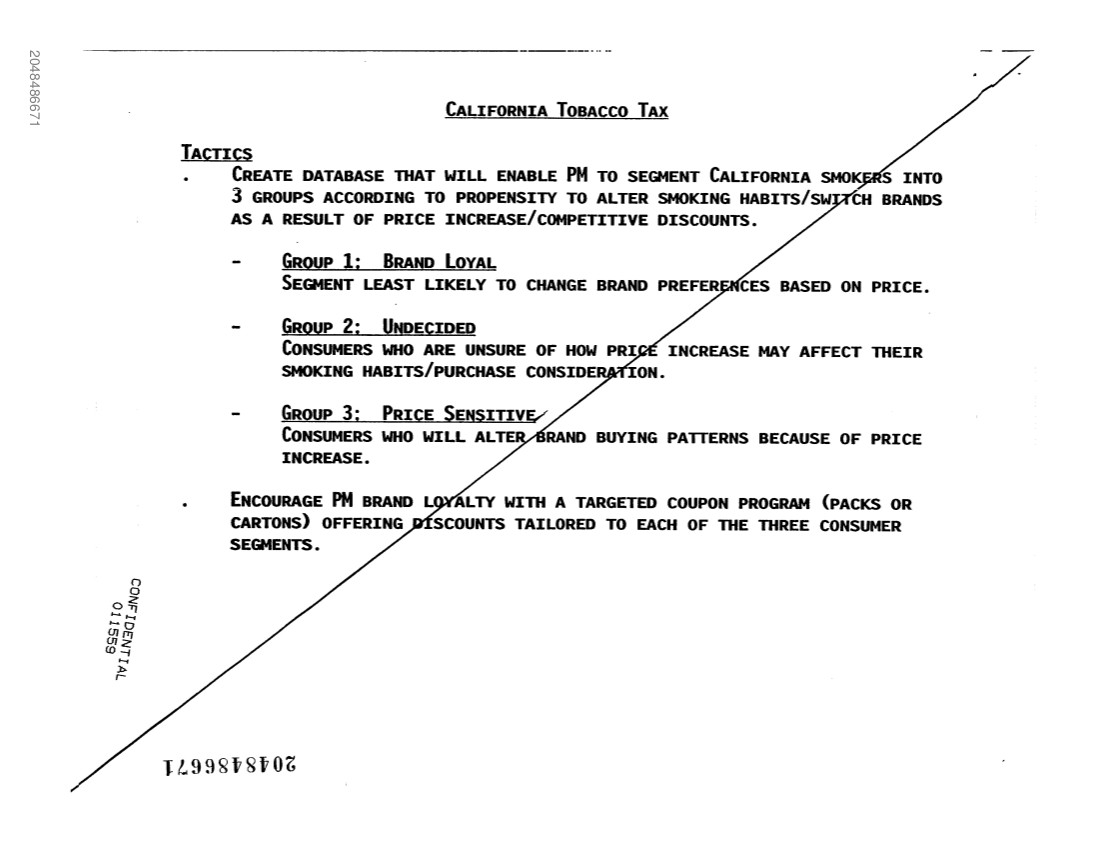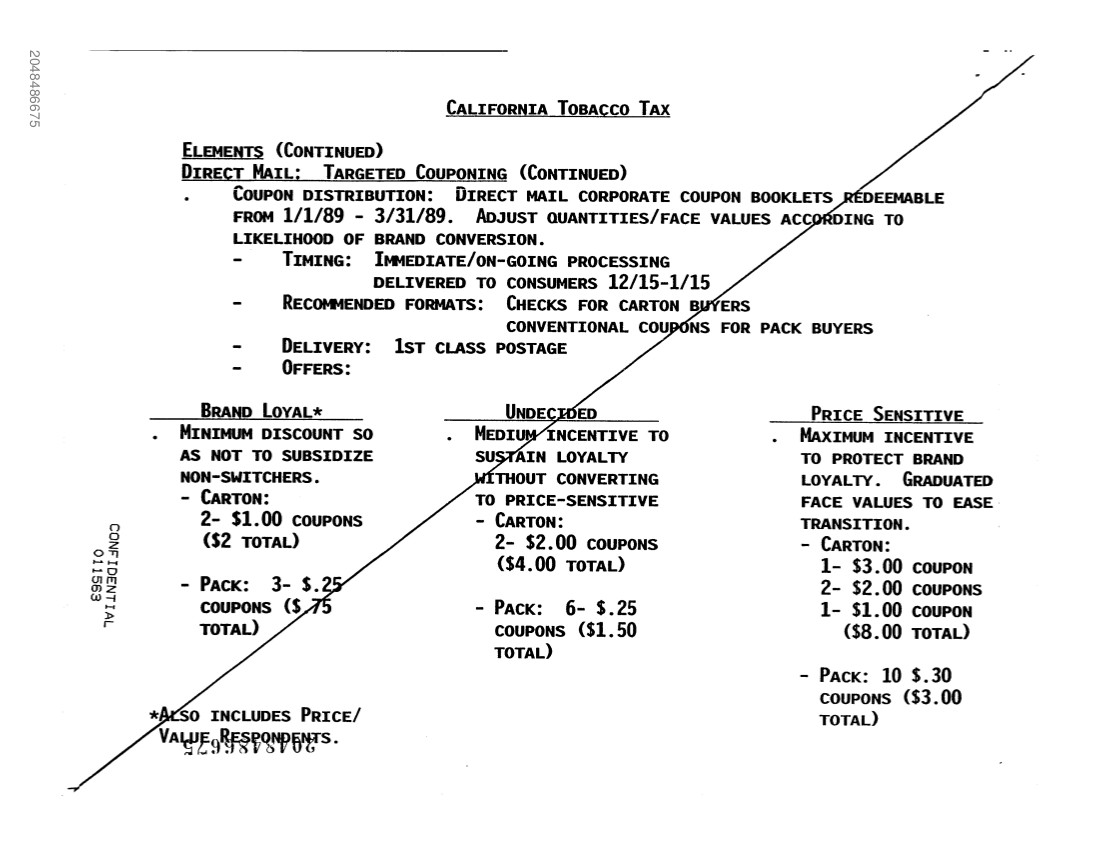


In response to Proposition 99, a proposal to increase the California state taxes on cigarettes in 1988, Phillip Morris USA rolled out a strategy to cushion PM smokers from the initial price increase, with a strong focus on price-sensitive smokers. The proposed strategy in this document is to create a database of California smokers divided in 3 segments: brand loyal, undecided and price sensitive. The idea was to send discount coupons to all three groups, giving the largest discounts to the price sensitive group, to encourage brand loyalty.
A 2002 study of tobacco company documents (Chaloupka FJ, Cummings KM, Morley C, 2002) was aimed at finding out what the companies knew about the impact of cigarette prices on smokers and to evaluate how this understanding affected their pricing and price related marketing strategies. The study's results were that there was clear evidence that tobacco companies were aware of the reduction in smoking after a price increase, and that they developed pricing strategies to counter this. The study also points to the fact that young smokers are particularly price sensitive, making them a target to price related promotions. Camel's market share amongst teens and young adults for example, grew during the 1980's and early 1990's, due to a combination of price reductions and imagery (Joe Camel).
The study concludes "Pricing and price related promotions are among the most important marketing tools employed by tobacco companies. Future tobacco control efforts that aim to raise prices and limit price related marketing efforts are likely to be important in achieving reductions in tobacco use and the public health toll caused by tobacco." (Chaloupka FJ, Cummings KM, Morley C, 2002).
Chaloupka FJ, Cummings KM, Morley C, et al. Tax, price and cigarette smoking: evidence from the tobacco documents and implications for tobacco company marketing strategies. Tobacco Control 2002;11:i62-i72.